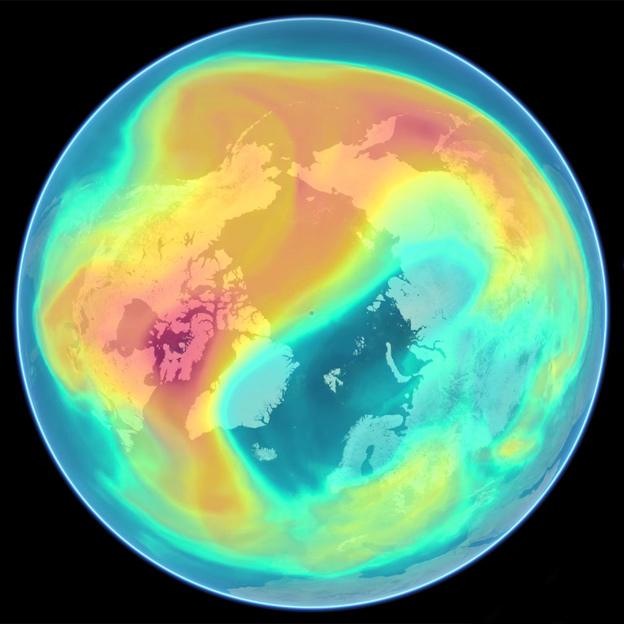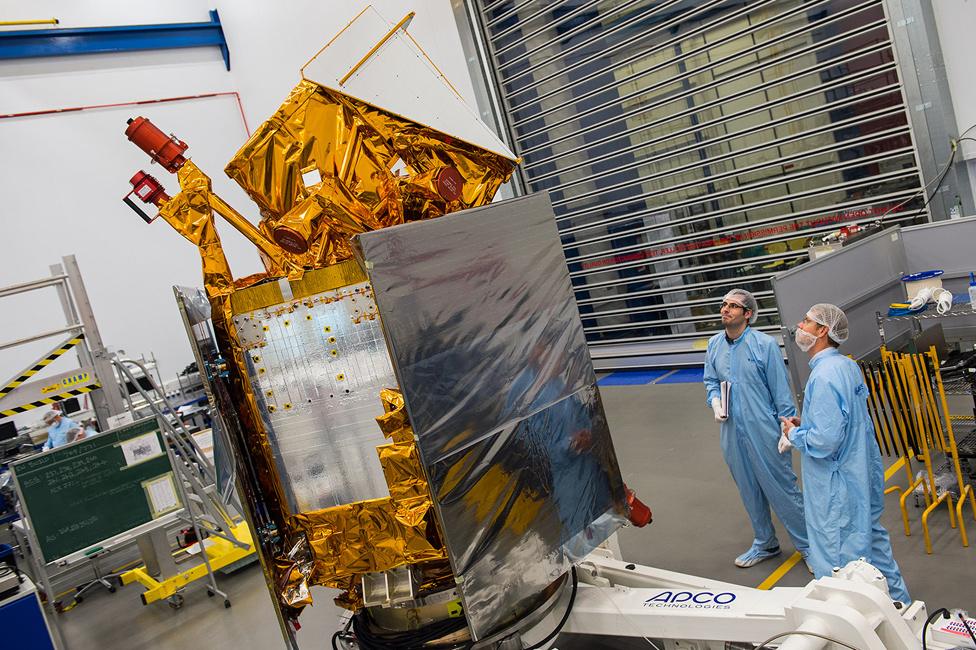A year in ozone over the South Pole
- Published
The visualisation runs from January to December 2016
This colourful video tracks the behaviour of the ozone layer over Antarctica across all of 2016.
It shows clearly the annual “hole” that appears above the South Pole in the austral springtime, and which last year grew to about 23 million sq km (9 million sq miles) in extent.
The visualisation comes from a model run by Europe's Copernicus Atmosphere Monitoring Service, external.
It is based on the data from satellite sensors that pass over the poles.
Key systems include the Metop platforms operated by Eumetsat, external - the pan-European organisation that gathers observations from space for use by national weather agencies.
Ozone is a molecule that is composed of three oxygen atoms. It is responsible for filtering out harmful ultraviolet radiation from the Sun.
The gas is constantly being made and destroyed in the stratosphere, about 20-30km above the Earth.
In an unpolluted atmosphere, this cycle of production and decomposition is in equilibrium. But chlorine and bromine-containing chemicals released by human activity have unbalanced the process, resulting in a loss of ozone that is at its greatest in September/October.
The Montreal Protocol signed by governments in 1987 has sought to recover the situation by banning the production and use of the most damaging chemicals.
Experts believe a slow healing is now under way, and expect the annual hole, which is more properly described as a deep thinning, to be routinely under 20 million sq km (8 million sq miles) come the 2040s.

Ozone thins over the north, too, but the annual depletion is not as pronounced
Eumetsat has posted a full version of the visualisation, external, which also includes a view of the north polar region. The north does experience thinning but not on the same scale as seen in the south.
The commentary on the video is by Ruediger Lang, Atmospheric Composition Scientist and Product Lead at Eumetsat.
The Copernicus Atmospheric Monitoring Service will soon have access to ozone data from a new sensor called Tropomi.
This will launch later this year on the European Union's Sentinel-5 Precursor satellite. The "Precursor" in the name references the fact that Tropomi and its spacecraft platform precede atmospheric sensors due to fly on the successors to Metop that should come into service from 2021.

Sentinel-5P will map atmospheric chemistry from an altitude of 824km